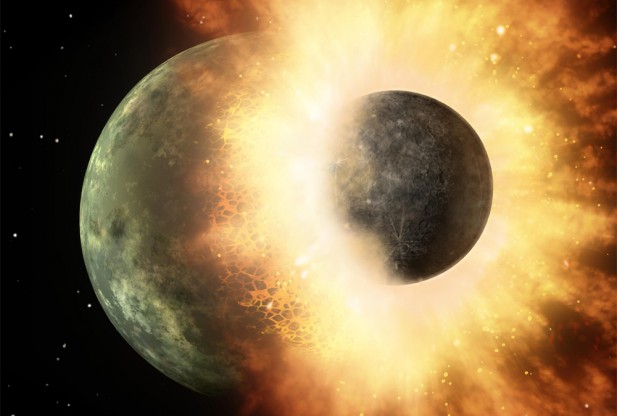
Scientists have simulated this formation process and reproduced many of the Earth-Moon system properties. However, these simulations have also given rise to a problem known as the Lunar Paradox. According to the Paradox, the Moon seems to be made up of material that would not be expected if the current collision theory is correct.
Published in Icarus, a recent study offers some new perspective on the theory in answer to this paradox.
In current theory models, analyses of the various simulations of the Earth-Theia collision predict that the Moon should be mostly made up of material from Theia. When materials from the Earth and the Moon are compared, however, there are remarkable similarities. In fact, elements from the Moon show identical isotopic properties to those found on Earth.
Since all other known solar system bodies, except the Moon, have a different isotopic composition from the Earth, it is highly unlikely that Theia had an identical isotopic composition. Moreover, for some elements like Silicon, the isotopic composition is the result of an internal process related to the size of the parent body. Given Theia was smaller than Earth, its Silicon isotope composition should have definitely been different from Earth's mantle.
A research team from the University of Bern, Switzerland, has made a significant breakthrough in understanding the story of the Moon's formation, suggesting an answer to the Lunar Paradox. Exploring a different geometry than previous simulations, they also considered new impact configurations such as the so-called "hit-and-run collisions," where a significant amount of material is lost into space on orbits unbound to Earth.
"Our model considers new impact parameters, which were never tested before. Besides the implications for the Earth-Moon system itself, the considerably higher impact velocity opens up new possibilities for the origin of the impactor and therefore also for models of terrestrial planet formation," explains lead author of the study, Andreas Reufer.
"While none of the simulations presented in their research provides a perfect match for the constraints from the actual Earth-Moon-system, several do come close," adds Alessandro Morbidelli, one of the Icarus' Editors. "This work, therefore, suggests that a future exhaustive exploration of the vast collisional parameter space may finally lead to the long-searched solution of the lunar paradox."



Why not just believe one of the several ET stories available online?
Takes a lot less research expense and is probably just as close to the truth.
I go with the theory that the moon is an artificial object made elsewhere.Why should I believe lowly earth scientists when we have access to data from alien societies that have historical continuity for the entire length of time involved?
I have grown a bit cynical about the "ET" stories, too. But can't we here on earth focus on more important subjects? Does it really matter how the moon was formed?